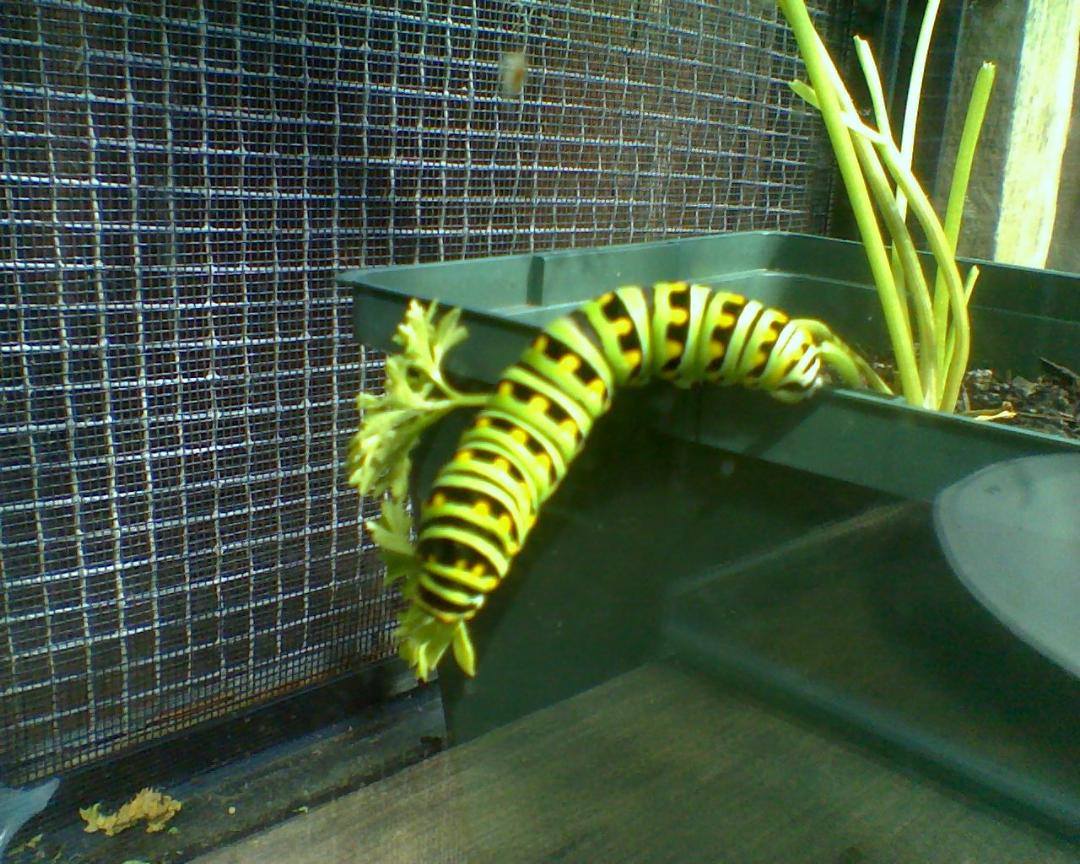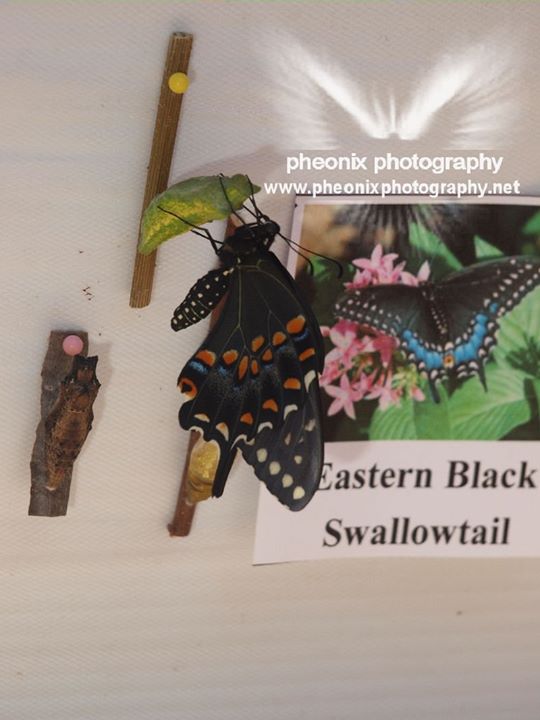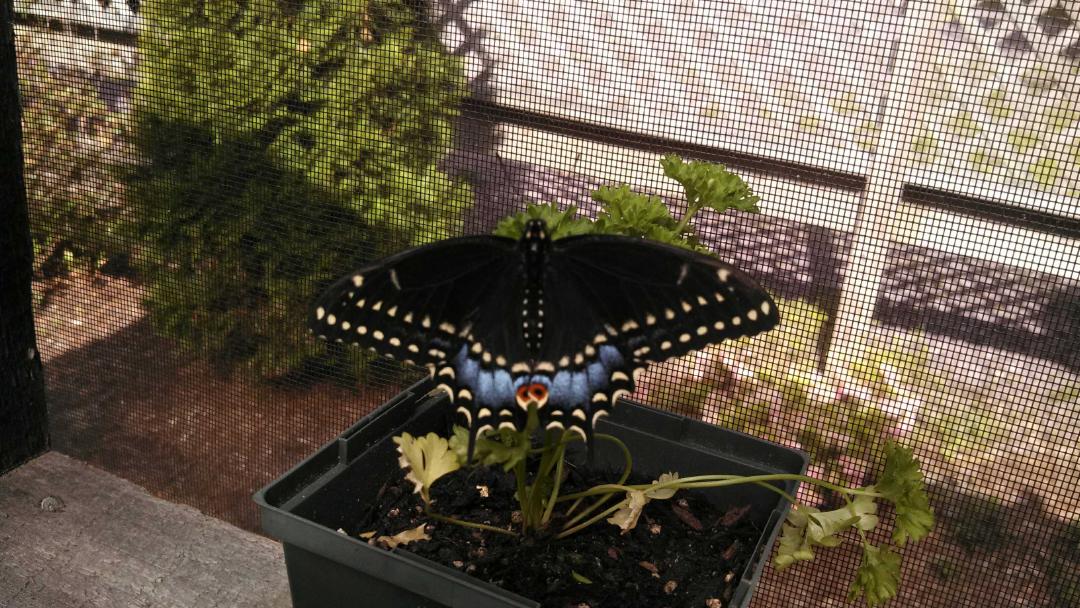January: Eastern Black Swallowtail
Kara Davidson
Papilio polyxenes, also known as the Eastern Black Swallowtail, is our January Butterfly of the Month.
Range: Eastern, central and southern United States from Maine to northern Mexico.
How to Attract them to Your Backyard: Their host plants (where they lay their eggs) include fennel, dill, Queen Anne’s lace and other plants in the wild carrot family. Butterfly Bush and Butterfly Weed make great nectar plants. (1) Ann, our gardening expert, has had great luck using parsley as a host plant and also recommends impatiens and petunias, as nectar sources. She highly recommends Butterfly Weed as a great nectar source for most butterflies.
May be confused with: Pipevine or Spicebush Swallowtail
Left: Spicebush Swallowtail Right: Pipevine Swallowtail
Size: ~3.5″
Season: April to September,
Female vs. Male: Males have a row of large light yellowish spots. Females have smaller spots, and have larger blue patches on their lower wings. (1)
Life Cycle: Young caterpillars are dark and covered with spikes, as they mature they lose their spikes and develop spots and stripes. Typically, the mature caterpillars are green with black markings, but some have more black due to natural variation. (1)
Interesting Facts:
- They can emit a nasty odor as a caterpillar when they feel threatened. (1)
In Our Habitat: We’ve found Eastern Black Swallowtails are incredibly difficult to photograph, especially when feeding. They flutter and bounce from flower to flower quickly, constantly on the lookout for their numerous predators. In the habitat, they prefer the types of flowers we usually keep in hanging baskets, so they are often up high.
References:
- Burris, Judy, and Wayne Richards. The Life Cycles of Butterflies: From Egg to Maturity, a Visual Guide to 23 Common Garden Butterflies. North Adams, MA: Storey Pub., 2006. Print.



